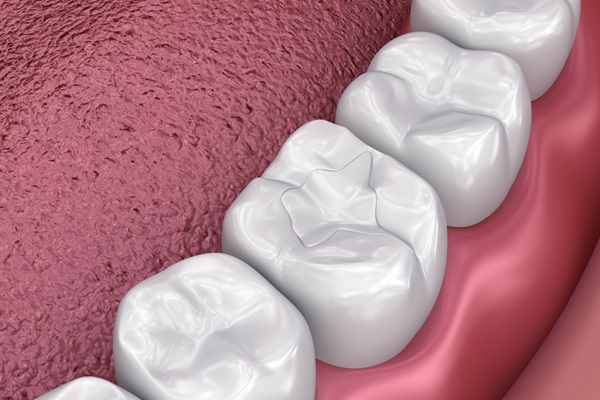How Tooth Colored Fillings Contribute to Cosmetic Dentistry

Tooth colored fillings can be a good option for front teeth or those that show when you smile. These fillings appear more natural than other materials that do not match your teeth.
According to the National Institute of Dental and Craniofacial Research, more than 90% of adults ages 20 to 64 have had fillings in their permanent teeth. Dentists fill teeth regularly and can answer your questions about the procedure.
Materials used in fillings
Your dentist has a variety of materials to choose from when you need a tooth filled.
Gold and alloys
A filling made from a mixture of gold and other metal alloys can last for more than 20 years. They are also called inlays.
Dental amalgam
According to the Food and Drug Administration, dental amalgam fillings are composed of powdered copper, silver, and tin mixed with liquid mercury. These silver-colored fillings are appropriate for larger fillings in the back of the mouth.
Glass ionomer
Powdered-glass fillings match your teeth. After the dentist applies the filling, the material forms a chemical bond with your tooth.
Composite
Tooth colored fillings made from glass and resin are called composite fillings. Like glass ionomer fillings, they look more natural than metal ones. However, composite fillings can stain just like natural teeth.
Porcelain
A porcelain inlay is crafted in a laboratory and bonded on your tooth. Porcelain resists staining and matches your tooth color.
Use of fillings that match your tooth
All of these materials are suitable for filling cavities. However, there are a few occasions when your dentist may recommend tooth colored fillings since they look more natural than metal options. This factor may be important to you if you have a tooth near the front that needs filling, or if you have another cosmetic consideration.
According to the National Health Service, glass ionomer fillings may have an additional advantage over their metal counterparts. Their chemical bond with your tooth may release fluoride to help fight further tooth decay.
Your front teeth are smoother and easier to clean than back teeth. You may associate cavities with molars for this reason. While it is true that molars are often harder to reach and may be more susceptible to tooth decay, front teeth can get cavities, too. The reasons are the same, including:
- Lack of regular oral care
- Sugary drinks and foods
- Inadequate fluoride
- Acid reflux
- Gaps in the teeth that get food stuck in them
Filling a front tooth is about the same as filling a molar. The dentist removes the decayed portion of the tooth and fills the area with the appropriate material. If you have a composite filling, keep in mind that it may not last as long as a metal filling. Daily brushing and flossing can help extend the life of the filling as long as possible. Regular checkups allow your dentist to inspect the area.
Conclusion
Tooth colored fillings are an option when you want to preserve the natural look of your teeth. Consult your dentist if you have questions about the material used in your filling.
Request an appointment here: https://drcalldental.com or call Dr. Call Dental Center at (706) 425-6240 for an appointment in our Dalton office.
Check out what others are saying about our dental services on Yelp: Composite Fillings in Dalton, GA.
Related Posts
Cavities are tiny holes that form on teeth due to decay. A dental filling is the standard way to address cavities. Silver amalgam fillings were the norm for decades, but composite resin fillings have emerged as one of the most popular types of dental filling.Tooth decay is caused by acids made by bacteria in the…
A dental filling plays a critical role in protecting the teeth and preventing further damage. But it also helps to understand how a dental filling prevents tooth decay. When teeth are damaged by decay, dental fillings help to restore them to their normal function. They can also prevent further decay. There are different types of…
If you are interested in learning more about composite fillings, you have come to the right place. This article will explore how composite resins are used to treat cavities, as well as break down how the entire process works.Composite fillings are a combination of plastic and glass. It is color matched to the patient's tooth…
A routine dental exam can help prevent dental cavities by detecting the early signs of enamel decay. If necessary, the dentist can take action to strengthen enamel so a cavity does not develop during a routine dental exam. This article provides a more in-depth review of the purpose and benefits of regular dental visits for…


